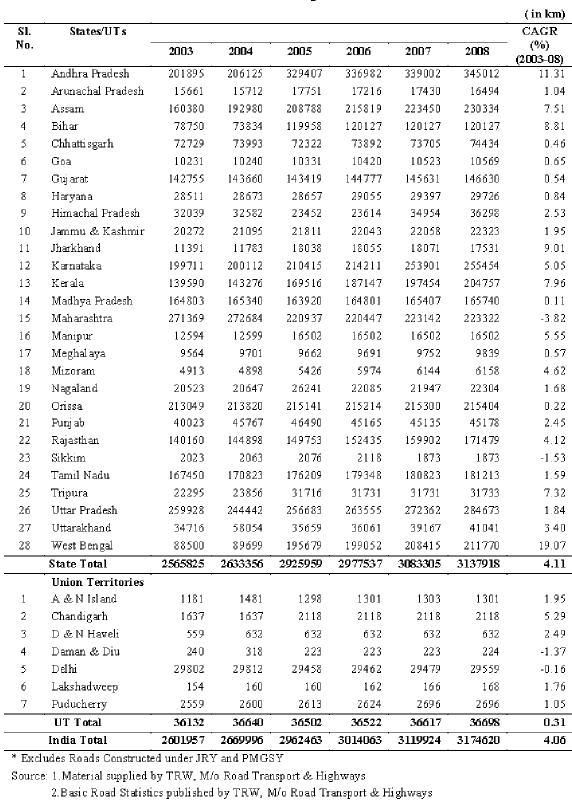1.1.1.5. Problems of Road Transport
The road transport in India is facing a number of problems. Some of them are as under:
1) About half of the Indian roads are unsurfaced. These can be used only in fair weather and becomes muddy and unfit during the rainy season.
2) Most of the National Highways suffer from inadequate capacity, weak pavements, old and broken bridges, unbridged level crossings, lack of by-pass roads and lack of amenities and safety measures. The mixing of traffic by high speed cars, trucks, buses, tractors, two wheelers, animal driven vehicles, cyclists, etc. increases traffic time, congestion, pollution and road accidents.
3) The existence of multiple check posts, toll tax, and octroi duties collection points on roads waste time and retards the traffic movement and speed.
4) Important amenities, such as repair shops, first aid centres, telephones, clean toilets, food outlets, rest places are lacking along the roads.

State wise Length of Roads in India
5) The rules of road safety and traffic are wilfully violated by the drivers and there is no efficient system of checking.
6) The road engineering and construction techniques are out-dated and are not able to meet the challenges of the future.
7) The participation of private sector in road development is very little due to high investments and low returns.
8) The policy relating to highway development is not stable, as it changes with the change of government.
9) The multiplicity of agencies involved in the planning, construction and maintenance of different types of roads.
10) There is a shortage of funds for the construction and maintenance of roads, even for highways, in India.
1.1.2. Rail Transport

The first train of the world started in 1825 A.D. between Stockholm to Darlington in northern England. Since then, railways became an important means of land transport. Railroad is normally called a track. Distance between two parallel rails is known as gauge. Over sixty percents of world's rail routes are of standard gauge of 1435 mm. Rail gauge larger than standard gauge is called broad gauge and smaller than standard gauge is called narrow gauge. The measurements of narrow and broad gauges slightly varies from country to country – narrow gauge between 914 mm and 1067 mm and broad gauge between 1520 mm and 1676 mm [as in India]. Further many countries have 1,000 mm gauge, also known as metre gauge.
